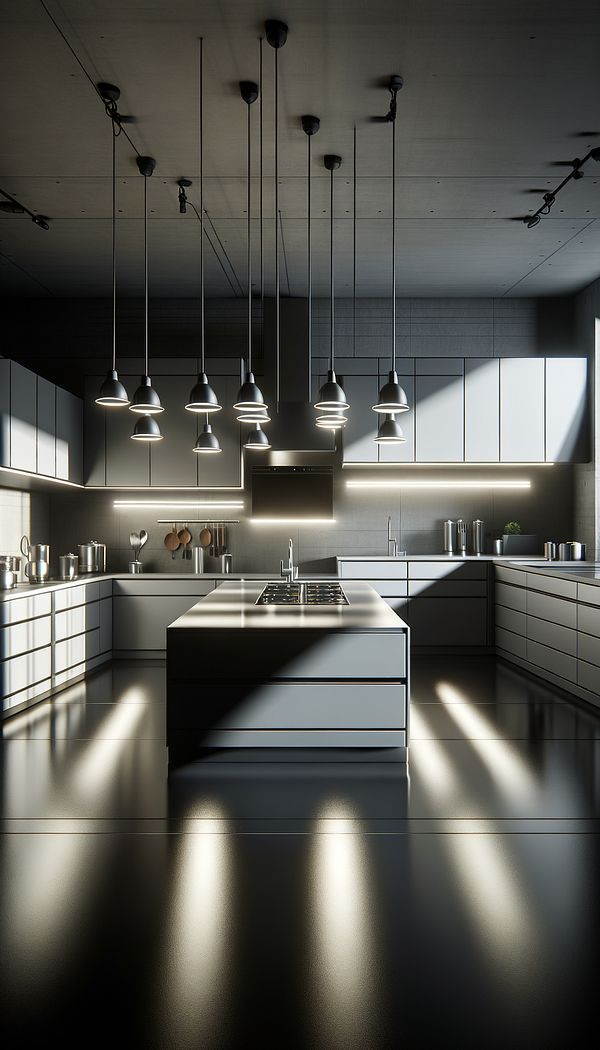What is Direct Lighting?
Direct lighting refers to a lighting solution where the majority of light is directed downwards towards a specific area or task.
Description
Direct lighting is a type of lighting where the light source is aimed in a specific direction, usually downwards, to illuminate a particular area or surface. This approach to lighting is designed to focus light where it is most needed, reducing the need for diffuse or general lighting in a space. The use of direct lighting can enhance the functionality of a space, highlight key features, or improve visibility for tasks such as reading, cooking, or working.
Direct lighting fixtures can include downlights, track lights, spotlights, and desk lamps. These fixtures are typically designed to concentrate light on a particular spot, allowing for more detailed and intensive work in the illuminated areas. Moreover, since the light is directed at specific zones, it allows you to play with contrasts and shadows, adding depth and drama to a room's design.
In interior design, integrating direct lighting thoughtfully is crucial for achieving the desired ambiance and functionality of a space. It can be balanced with indirect lighting to create a well-lit environment that minimizes harsh shadows and glare, offering a comfortable setting for various activities. It's also essential to select the right color temperature and intensity of light to match the room's purpose and mood.
Usage
Direct lighting is commonly used in kitchens and offices, where tasks such as cooking, reading, and computer work require focused light for safety and productivity. It's also effective for highlighting artwork, architectural features, or display areas in galleries and shops.
FAQs
-
Can direct lighting be used in any room?
Yes, direct lighting can be applied across various rooms depending on the requirements. However, it's most beneficial in areas where task-specific lighting is needed, such as kitchens, offices, and workspaces.
-
Does direct lighting create shadows?
Yes, since direct lighting focuses light on specific areas, it can create shadows around the objects or spaces that are not directly illuminated. It's often balanced with indirect lighting to soften shadows and create a more even light distribution.
-
Is direct lighting energy-efficient?
Direct lighting can be energy-efficient, especially when using LEDs or other low-energy light sources. By focusing light only where it's needed, you potentially reduce the overall need for lighting in a space, which can lead to energy savings.
Practical Application
When incorporating direct lighting into your space, consider the specific tasks or activities in the area. Choose fixtures that provide adequate illumination for the tasks at hand, and ensure they are positioned to minimize glare and shadows. You may also want to utilize dimmable options to adjust the light intensity according to the time of day or specific needs. Remember to complement direct lighting with indirect lighting for a balanced and visually comfortable environment.
-
Lighting111 articles
-
Technical Terms38 articles
-
Space Planning & Layout134 articles
-
Decorating Principles & Elements330 articles
-
BarIn interior design, a bar refers to a counter and the surrounding area where beverages, either alcoholic or non-alcoholic, are prepared and served.
-
Bar StoolA tall chair designed for use at a bar or high countertop.
-
Statement PieceA bold, distinctive item that draws attention and sets the tone for a space.
-
Bistro TableA bistro table is a small table, typically round, designed for intimate dining or coffee for two.
-
Building PermitA building permit is an official approval issued by local government or regulatory authority for the construction or substantial alteration of a building.
